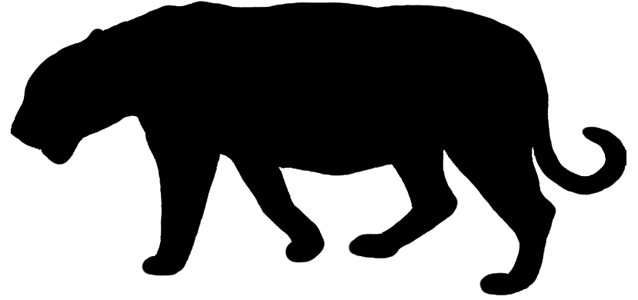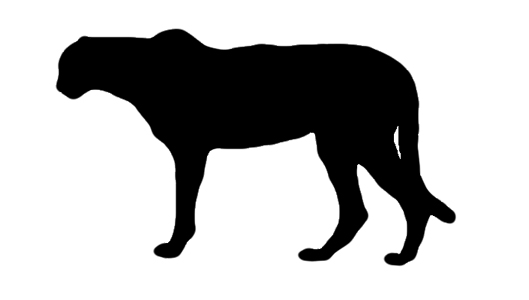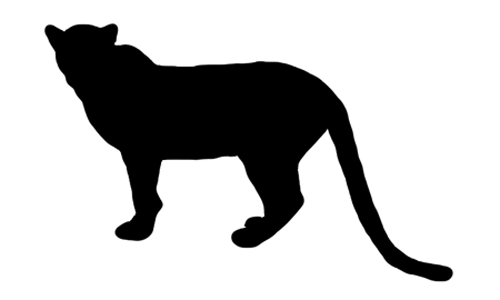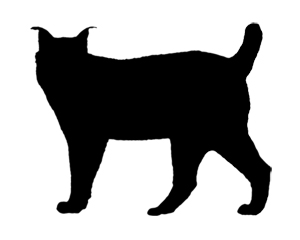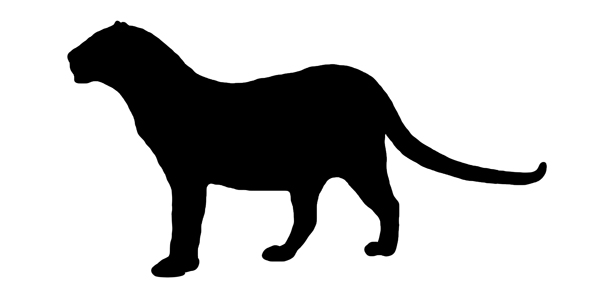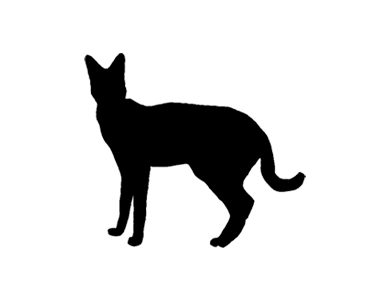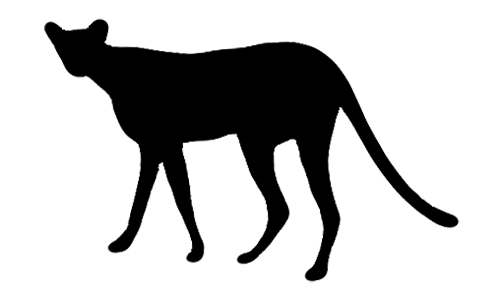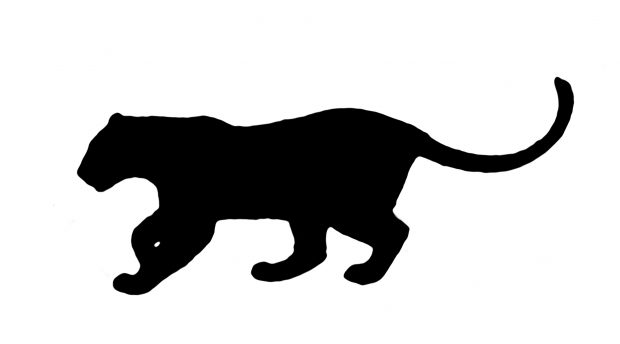The largest breeding colony of Atlantic Puffins (Fratercula arctica) south of Scotland is on Skomer Island, on the western coast of Wales. Over 10,000 pairs breed in underground burrows here. Sometimes they burrow the holes they lay their eggs in themselves, sometimes they simply kick out the rabbit that was using it before (considering the size difference, that is an amazing feat). All of the burrows are close to the coastal cliffs. This means they can take flight easily if danger approaches (in the form of Peregrine Falcons) and there isn’t much time for gulls to steal the catch the puffins are bringing back to their chicks between landing and disappearing underground.
The Breeding Colony:
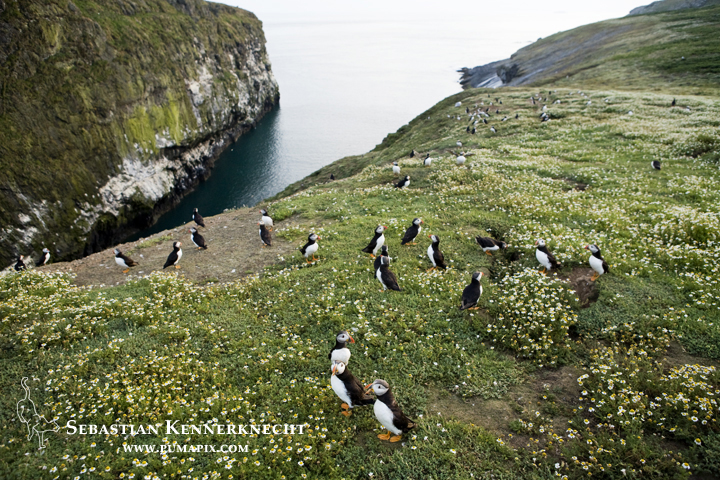
Atlantic Puffin (Fratercula arctica) group at coastal breeding colony, Skomer Island National Nature Reserve, Skomer Island, Pembrokeshire, Wales, United Kingdom
Puffins at their Burrows:
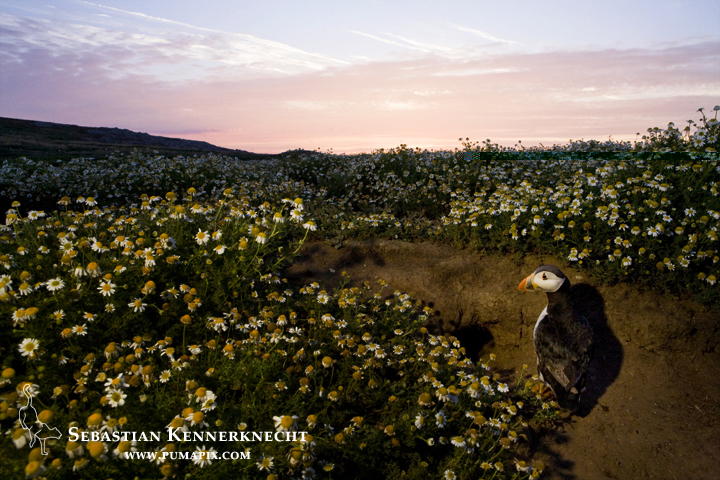
Atlantic Puffin (Fratercula arctica) at nest burrow at sunrise, Skomer Island National Nature Reserve, Skomer Island, Pembrokeshire, Wales, United Kingdom
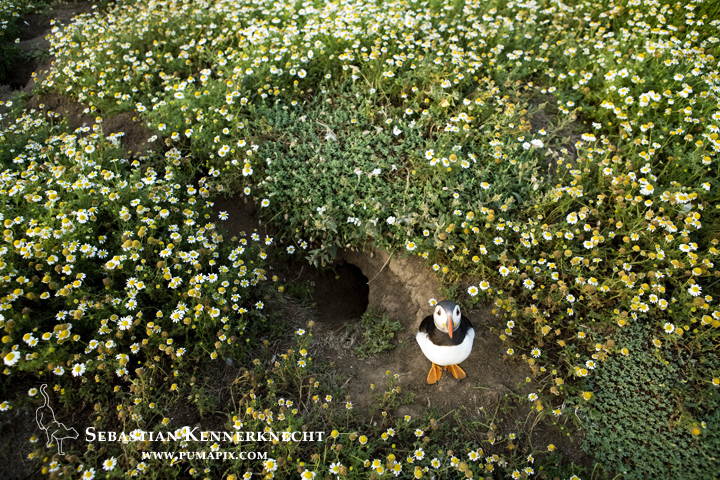
Atlantic Puffin (Fratercula arctica) at nest burrow, Skomer Island National Nature Reserve, Skomer Island, Pembrokeshire, Wales, United Kingdom
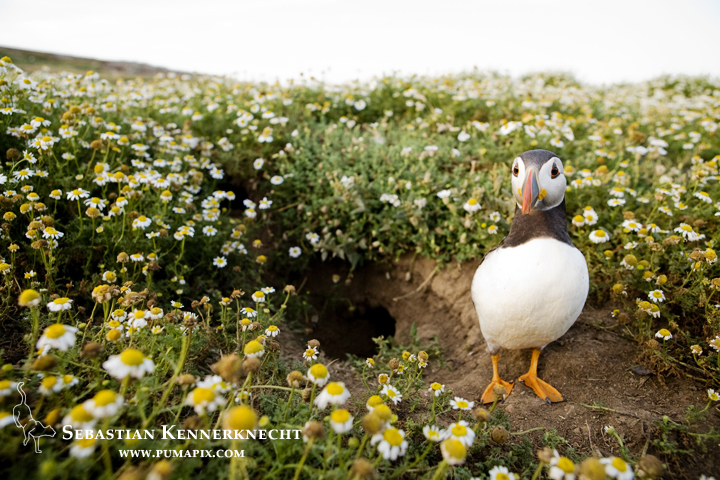
Atlantic Puffin (Fratercula arctica) at nest burrow, Skomer Island National Nature Reserve, Skomer Island, Pembrokeshire, Wales, United Kingdom
To collect food for their one chick (also called a pufflling), they forage in relatively close waters (most within 7km from this colony) by diving underwater and catching small fish. They collect multiple fish at one time by pressing the caught ones to their upper mandible with their tongue (amazing or what!?!). Eleven species of fish are common prey (mostly sandeels), but up to twenty four different species of fish have been recorded to be used as food by these guys.
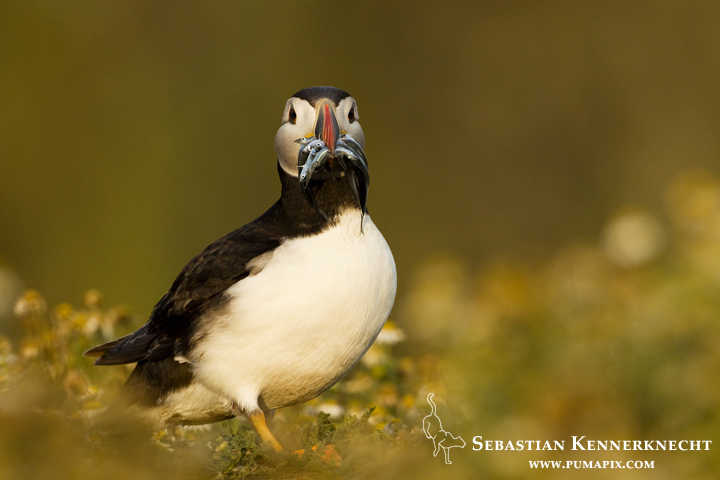
Atlantic Puffin (Fratercula arctica) carrying fish prey, Skomer Island National Nature Reserve, Skomer Island, Pembrokeshire, Wales, United Kingdom
When on land without fish, they engage in a few different behaviors.
Like many other birds, a male and female pair bond by touching their bills together in a behavior called billing.
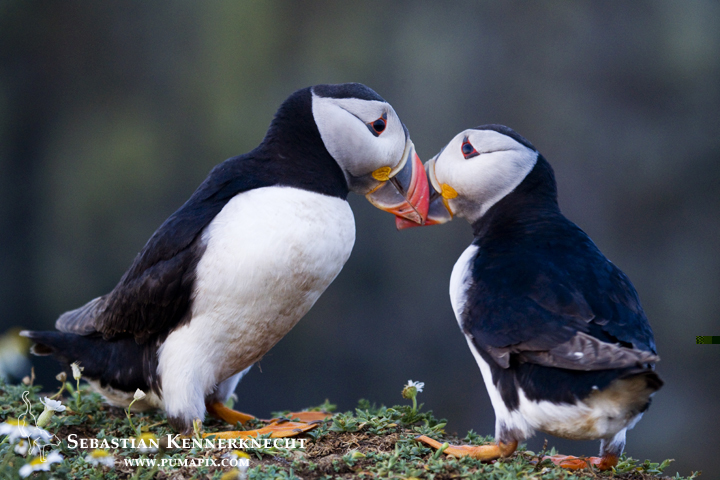
Atlantic Puffin (Fratercula arctica) pair billing, Skomer Island National Nature Reserve, Skomer Island, Pembrokeshire, Wales, United Kingdom
Flapping their wings is also quite easily seen. Ornithologists interpret this as both a comfort and/or displacement behavior.
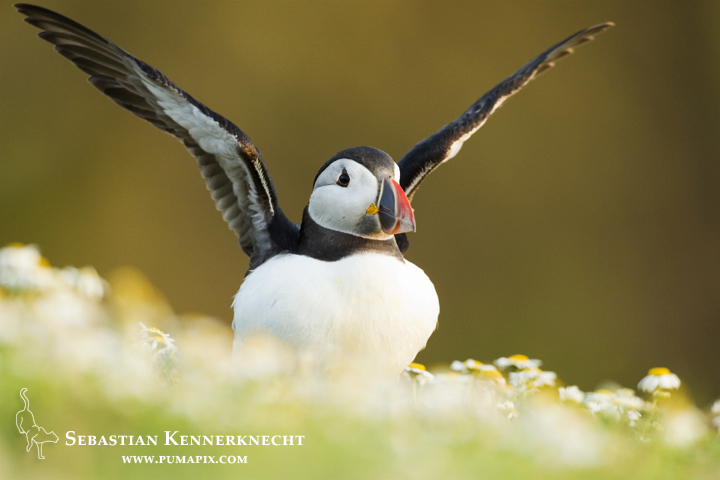
Atlantic Puffin (Fratercula arctica) flapping wings, Skomer Island National Nature Reserve, Skomer Island, Pembrokeshire, Wales, United Kingdom
When you are this cute, it’s understandable when one needs a rest.
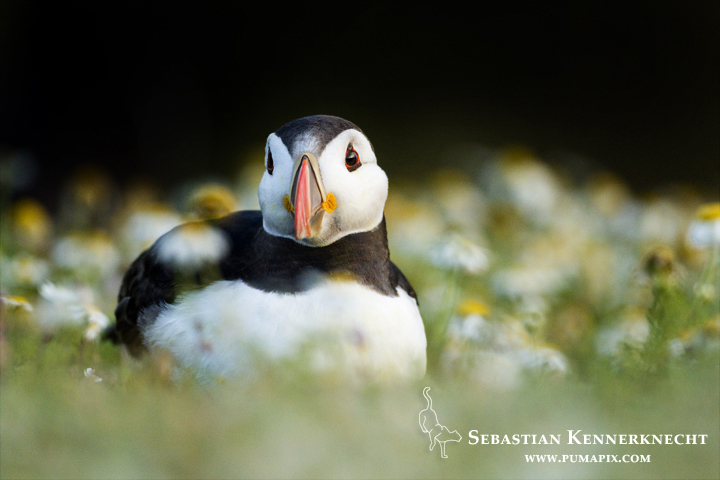
Atlantic Puffin (Fratercula arctica) resting, Skomer Island National Nature Reserve, Skomer Island, Pembrokeshire, Wales, United Kingdom
Towards the late evening, you may start seeing individuals head-flicking, which is a way to communicate between individuals and may partially serve to synchronize the departure from the colony.

Atlantic Puffin (Fratercula arctica) head-flicking, Skomer Island National Nature Reserve, Skomer Island, Pembrokeshire, Wales, United Kingdom
The amazing thing about this particular colony is that the puffins let you get extremely close, often even running right by your feet. Scientists on the island are currently figuring out if our human presence is having a negative impact on the Puffins. Instinctively, I would wager that to be the case but I talked to one scientist who said it may be balanced by the fact that our presence often dissuades the gulls from coming in and stealing the puffins caught fish. I sure hope that’s the case and I am interested to hear the final results of that study. At the very least, it allows for amazing portrait opportunities.
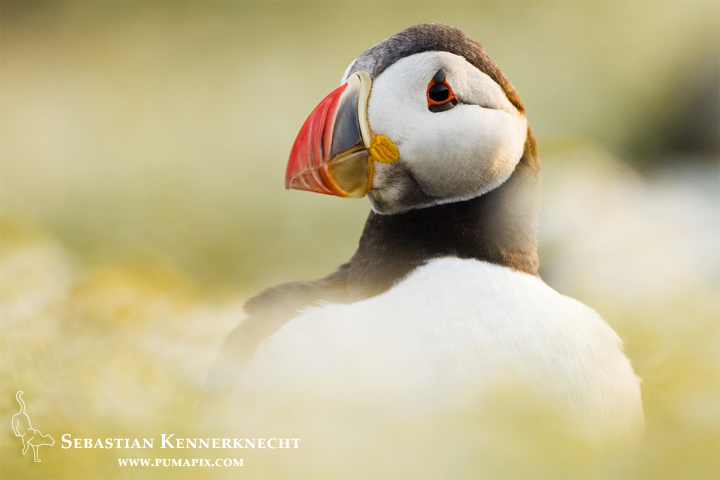
Atlantic Puffin (Fratercula arctica) in breeding plumage, Skomer Island National Nature Reserve, Skomer Island, Pembrokeshire, Wales, United Kingdom
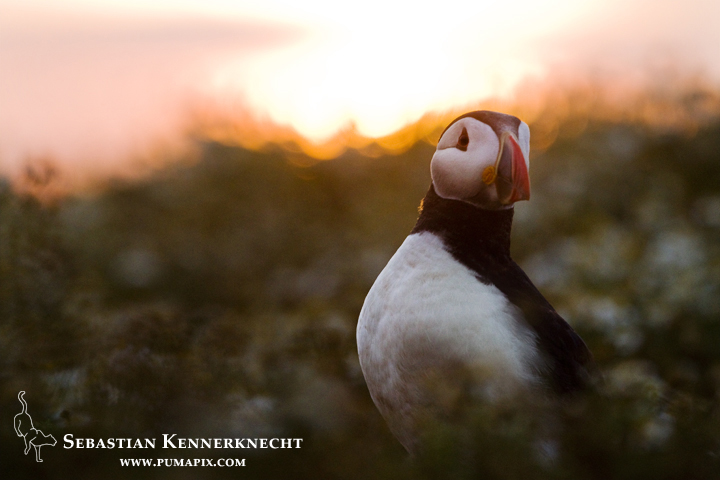
Atlantic Puffin (Fratercula arctica) at sunrise, Skomer Island National Nature Reserve, Skomer Island, Pembrokeshire, Wales, United Kingdom
I really didn’t feel like I had enough time to hang out with these amazing creatures and only tried for a few minutes to get a flight shot.
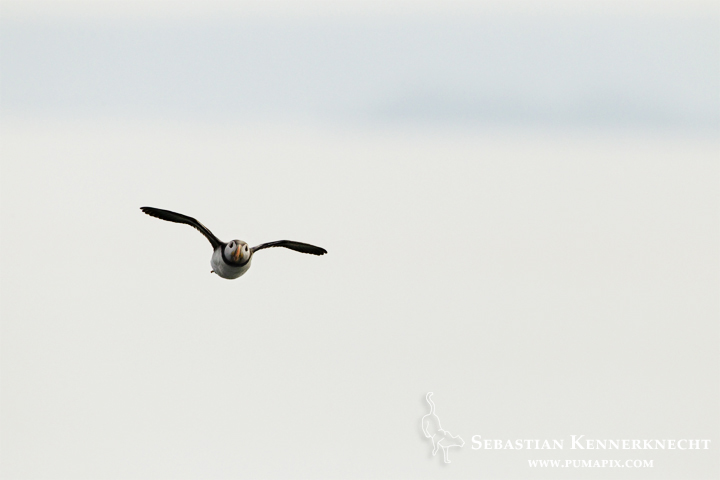
Atlantic Puffin (Fratercula arctica) flying, Skomer Island National Nature Reserve, Skomer Island, Pembrokeshire, Wales, United Kingdom
or a on the water shot for that matter.
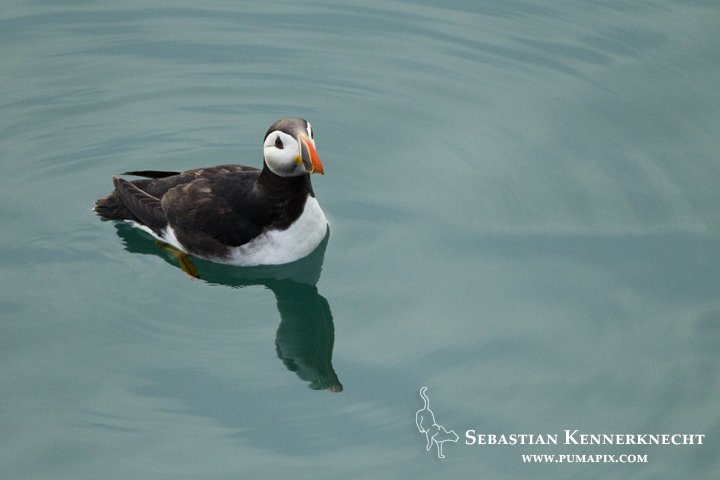
Atlantic Puffin (Fratercula arctica) on water, Skomer Island National Nature Reserve, Skomer Island, Pembrokeshire, Wales, United Kingdom
If you want to see more Puffin pictures from the trip, click here, if you want a free desktop wallpaper, check out this blog post.
*If you are interested in purchasing any of the pictures displayed in this post, please check out my fine prints page for pricing.*

